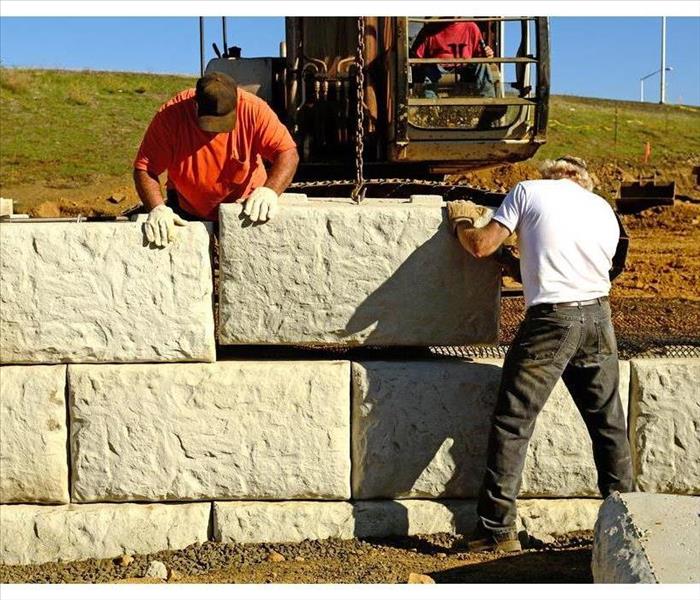Flood Prevention Strategies for Communities
11/15/2021 (Permalink)
Flood Prevention Strategies
Whenever heavy rain storms roll into Oklahoma City, OK, one after another, or hurricane season hits the coasts, flooding and safety become pertinent topics. Whether you're concerned about your business or the safety of your employees, you're probably invested in municipal flood prevention strategies. There are five common approaches that could be implemented in your area.
1. Detention Basins
These sunken zones are often connected to, or located near, waterways. They serve as temporary reservoirs for rising levels of water. A park, for example, may have a sunken layer, shaped to hold water in a makeshift pond until water levels decrease. This gives people in your community more time to make necessary arrangements for getting to safety.
2. Landscaping Elements
Erosion adds new levels of damage to those caused by water. The rushing water often washes away natural barriers and foundations. Strategic placement of trees, shrubs, and grasses may prevent harmful erosion. This tactic may also reduce the debris that gets washed downstream, reducing some of the damage left in the aftermath of the rushing water and adding to flood prevention.
3. Retaining Walls
If flooding is a consistent problem in the community, retaining walls may be constructed to provide temporary holding spots for water to accumulate during high water times. These temporary dams or retention ponds can provide extra time for communities to evacuate.
4. Defense Walls
The defense walls are put in place to deter tidal waves from threatening buildings and structures in town. During severe weather, sand bags may provide an additional support to the walls.
5. Human Efforts
No matter how well town developers plan for potential flooding, if community members allow drainage systems to become clogged with trash and vegetation, prevention strategies will be useless. Waterways, gutters, and drainage areas must be kept clean and free of litter.
With the common goal of flood prevention, city planners, business leaders, and community members can all make an effort to prepare for storms. A united effort can decrease the need for flood cleaning, prevent significant damage, and possibly save lives.



 24/7 Emergency Service
24/7 Emergency Service
